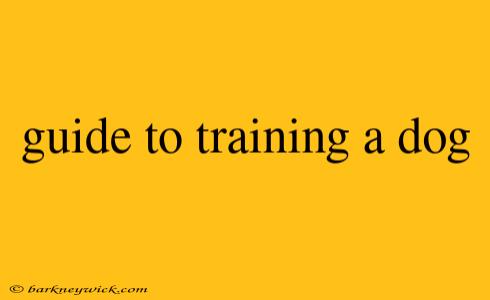Unlocking Your Dog's Potential: A Comprehensive Guide to Training
Have you ever wished your dog understood your every word? Remember that time when you were trying to enjoy a peaceful dinner, only to have your playful pup snatch your burger off your plate? We've all been there. It's moments like these that make us yearn for a well-trained companion, one that responds to our commands and brings joy instead of chaos.
This guide is your roadmap to achieving that harmonious relationship with your canine friend. We'll dive into the world of dog training, exploring effective techniques, common pitfalls, and the rewarding journey of building a bond that's based on mutual understanding.
Understanding the Power of Positive Reinforcement
In my opinion, positive reinforcement is the key to successful dog training. It's about rewarding desired behaviors, making your dog want to listen. Think of it like this: Imagine you're learning a new skill – you'd be much more motivated if you were praised for your efforts, right? The same principle applies to your furry friend.
Research from the American Kennel Club (AKC) highlights the efficacy of positive reinforcement: Studies show that dogs trained using positive reinforcement methods are more likely to learn quickly, exhibit fewer behavioral issues, and develop a strong bond with their owners.
Here's how to implement it:
- Choose the right rewards: Every dog is different, so experiment to find what motivates yours! Treats, praise, playtime, or even a favorite toy can work wonders.
- Timing is key: Reward your dog immediately after they perform the desired action.
- Keep it consistent: Reinforce the behavior regularly to solidify the learning process.
Essential Commands Every Dog Should Know
Just like learning the alphabet, certain basic commands form the foundation of dog training. These commands are essential for safety, communication, and building a strong relationship with your dog.
Here are the key commands to master:
- "Come": Teach your dog to come when called, ensuring their safety in various situations.
- "Sit": This command is vital for teaching other behaviors, such as "stay" or "down."
- "Stay": Teach your dog to remain in a position for a designated time, promoting calm and control.
- "Down": This command is useful for encouraging relaxation and preventing unwanted jumping.
- "Leave it": This command is essential for preventing your dog from ingesting potentially harmful items.
- "Drop it": Teach your dog to release an object they are holding, promoting safety and cooperation.
Remember, patience is key! Training takes time and consistency. Celebrate small successes and don't get discouraged by setbacks.
Addressing Common Behavioral Issues
Even with proper training, dogs can still exhibit unwanted behaviors. Understanding the root of these issues is crucial for effectively addressing them.
Here are some common behavioral issues and how to approach them:
- Excessive Barking: This can be caused by anxiety, boredom, or a lack of boundaries. Training with positive reinforcement, providing mental and physical stimulation, and creating a calm environment can help.
- Jumping: This is often a sign of excitement or attention-seeking. Teach your dog the "sit" command before greeting people, and reward them for calm behavior.
- Chewing: This is a natural instinct for dogs. Provide them with appropriate chew toys, and redirect them away from forbidden items.
- Aggression: This can be caused by fear, anxiety, or resource guarding. It's essential to seek guidance from a qualified professional.
While positive reinforcement is generally effective, some behaviors may require a more structured approach. This is where seeking the expertise of a certified dog trainer can be invaluable.
Introducing the "Canine Good Citizen" Program
For those looking for a structured approach to training, the AKC's Canine Good Citizen (CGC) program is a fantastic resource. The CGC program is a benchmark for well-behaved dogs, testing their obedience, socialization, and basic manners.
The program covers essential skills such as:
- Walking politely on a leash
- Coming when called
- Accepting a friendly stranger
- Allowing handling by a veterinarian
- Responding calmly to distractions
Completing the CGC program can be a rewarding experience for both you and your dog. It provides a tangible goal to work towards, strengthens your bond, and opens doors to a wider range of activities, such as participating in therapy dog programs or visiting assisted living facilities.
Embarking on the Training Journey Together
Remember, training a dog is a journey, not a destination. It's a process of building trust, communication, and a deeper bond between you and your canine companion.
Just like that first time your dog understood your command and came running to you, the joy of watching your dog grow and learn is truly priceless. With dedication, patience, and a healthy dose of positive reinforcement, you can unlock your dog's full potential and create a lifetime of happy memories together.
